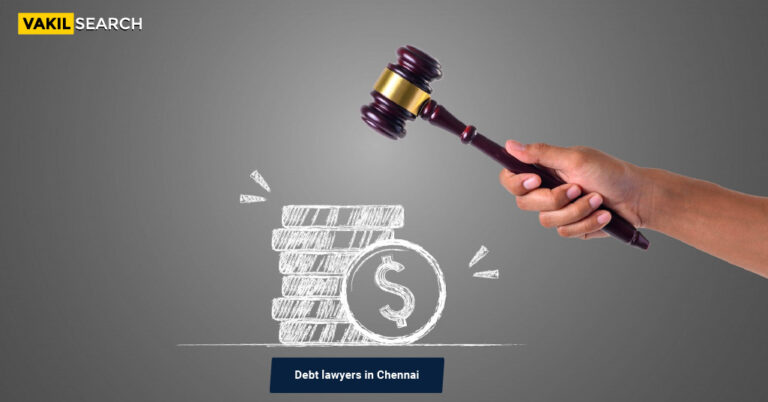In this article we understand the law regarding recovery of debt and the statute of limitation applicable for judicial action on default of debt.
Court cases are of two kinds: criminal and civil. The principal difference between the two is that a criminal case affects society in general, and a civil case is a dispute between two parties and doesn’t affect society in general. let’s see to recovery of debts in this blog.
Many times it can be difficult to tell which is which. Let’s take, for instance, that A lent B money and B failed to pay back the money.
So how do we know whether this is a criminal or civil case? We can know the difference by investigating further into the case if A lent B money and B took the money in good faith, intending to pay it back.
Then the default in paying back is precise and hence is a civil matter resolved as a dispute. But suppose B took the money in a fraudulent scheme with no intention of paying it back. In that case, B may do this to someone else again in the future and hence must be treated as a criminal and a threat to society.
Now, since criminal cases are tried with the intent of keeping society safe from deviant elements, they are of the highest importance to the judicial system. In criminal cases, even if the victim doesn’t come forward with a complaint, the court can take suo moto action, i.e. action on its own, in the greater interest of justice.
However, civil cases, which are disputes between two parties and usually involve someone claiming a violation of their constitutional rights, are the parties’ responsibility.
Because a dispute between two parties is a private matter, the court cannot do anything until it has been approached to judge who is right and wrong.
A legal maxim in Latin says ‘vigilant bus non-dormientibus Jura subventions”, which means ‘justice serves the vigilant, not the dormant.’ This maxim is the basis for introducing a ‘limitation period’ better known in the legal community as a ‘statute of limitation.’ Let us take a look at how this works.
Statute of Limitation for Recovery of Debts
1. The ‘limitation period’ or the statute of limitation is a period of time within which one must come forward with any complaints regarding a particular issue. If an issue is brought forth within the statute of limitation, the courts must address it. But suppose an issue is brought forward beyond the statute of limitation recovery of debts. In that case, the court has no obligation to address the issue.
2. It is then up to the presiding judge to examine the circumstances of the case and decide whether the case should be taken forward or not. The statute of limitation for recovery of debts was legislated within the Limitation Act 1963, which lays down the limitation periods in various cases and circumstances.
3. For recovery of debts, the statute of limitation is three years from the day the money was lent. Suppose there is no dispute regarding the money lent within three years of lending it. In that case, the statute of limitation expires, and the court has every right to refuse to entertain the case.
4. Of course, this begs the question, why is the statute of limitation set for three years from the date of lending and not from the default date? This is because a) there is a presumption that lenders don’t offer loans for a period exceeding three years.
5. This was, of course, true in the 1960s as money lenders did not have the bandwidth to track a loan for more than a period of three years, and so all long-term loans did not exceed a term of three years.
6. And b) There is the reasonable presumption that if a person has been paying the loan back the instalments on the loan with interest for three years without any dispute with the money lender, then any default beyond that point was likely to be purely circumstantial and not fraudulent hence not requiring the court to play an active role.
7. But now, with sophistication in business practices and technology, terms of loans have gone way beyond three years. So to keep up with the times, a provision was introduced in the act.
8. The provision states that within three years if the lender can get an acknowledgement from the borrower regarding the sum owed, the statute of limitation begins from that date. So if a lender gets a monthly acknowledgement from the borrower until the last instalment has been paid, then the statute of limitation will be safely available for three years on the prospective default of every payment.
9. Besides these remedies, there is a blanket remedy for all delays in what is known as the ‘condonation of delay’ clause. This clause states that if the plaintiff can prove that the delay was unavoidable and that they had planned on taking legal action within the statute of limitation but was somehow obstructed from doing so, then the law will condone such a delay and permit the redressal of such a case.
Case Study
Let’s examine a case where we can understand the statute of limitation better.
- V is a trader who employed Y as a clerk. Y approaches R and seeks a loan of ₹ 1,000 on behalf of V. Two years later, R filed a case on V and Y for default in payment. V claims that he had never authorised Y to take a loan in his name and had never received the money from Y.
- Y claimed the opposite. He claimed that V had authorised the loan. Y had collected the amount from R, and later on, V returned the money to V and asked him to repay R, and Y repaid R the full amount.
- After one year of due proceedings, the court found that Y was not telling the truth. Regardless of whether V had authorised Y, Y had received money from R and had not paid it back. So Y was ordered to pay the money back with an interest of ₹ 765, totalling the amount of ₹ 1,765. V paid off R on behalf of Y in good faith, hoping to recover the money from Y eventually.
- Two more years later, V now files a case on Y seeking that Y repay the money V paid on his behalf to R. Y claimed the statute of limitation on the basis that they had received the notice for non-payment from R over three years ago.
- So V knew about the non-payment more than three years ago. Y argued that the loan date should be considered from when R became aware of the default, which was the day they received the notice.R argued that only on the date the judgement was passed against Y, a year after R sent them the notice, did he become fully aware that Y had not paid the money.
- Until the judgement date, Y claimed to be not guilty and enjoyed V’s benefit of the doubt. So the date of the judgement, which was only two years ago, was the date he became aware of the non-payment. Hence the statute of limitation has not yet lapsed. The court upheld R’s argument and awarded the case to him, ordering Y to repay V in full.
Conclusion
As the case study above shows, the law is a matter of interpretation and perception. And so it always helps to have a legal ear you can consult with and gain the right kind of perspective and guidance regarding any situation in the law context. If you have any legal queries or requirements, get in touch with vakilsearch today and avail the best legal advice at the lowest prices. Click to get your recovery of debts.
FAQ on Recovery of Debts
What is the restriction period for the recovery of debts, and how is it defined in legal terms?
The restriction period, also known as the limitation period, defines the legal timeframe within which a creditor can take action to recover a debt. After this period expires, the debt becomes time-barred, and legal enforcement becomes significantly more difficult.
Is the restriction period for debt recovery the same for all types of debts, or does it vary based on certain criteria?
The restriction period for debt recovery in India is typically three years from the date the cause of action arises. However, different types of debts may have different limitation periods.
What legal provisions or statutes govern the restriction period for debt recovery in a jurisdiction?
The Limitation Act, 1963, sets out the general limitation periods for different types of debts in India. However, The Indian Contract Act, 1872, and other relevant laws also govern debt recovery in India
How is the restriction period calculated, and when does it start for the recovery of debts?
The restriction period usually starts from the due date of the debt or the last acknowledgment/payment made by the debtor.
Are there different restriction periods for secured and unsecured debts, and how are they determined?
Yes, there are different restriction periods for secured and unsecured debts. Secured debts generally have a longer restriction period, as they are attached to collateral security.
Can the restriction period be extended or altered under certain circumstances, and what factors influence such decisions?
The restriction period cannot be extended or altered under certain circumstances, but there may be limited exceptions in specific cases, such as when the debtor is a minor or mentally incapacitated.
What actions can creditors take during and after the restriction period to recover outstanding debts?
During the restriction period, creditors can send notices, demand letters to the debtor or initiate legal proceedings to recover the debt.
How does the expiration of the restriction period impact the enforceability of debt recovery proceedings?
The expiration of the restriction period makes it difficult for creditors to enforce debt recovery proceedings, as they cannot initiate legal proceedings to recover the debt.
Is there a distinction in the restriction period for recovery of debts based on the nature of the creditor (individual, business, financial institution)?
The restriction period generally applies to all types of creditors, from individuals to businesses and financial institutions. Certain legal exemptions might exist for specific entities.
Read More










